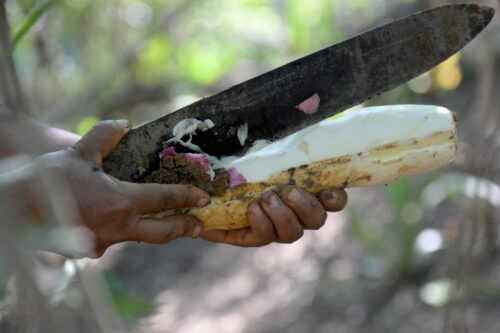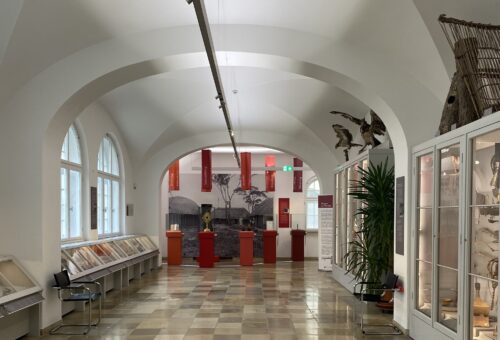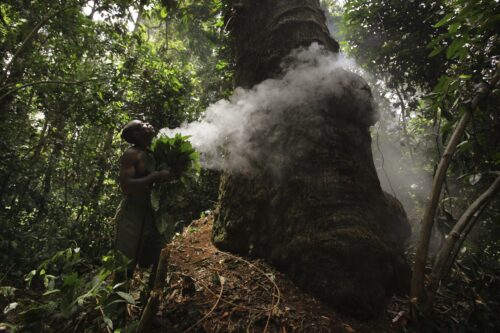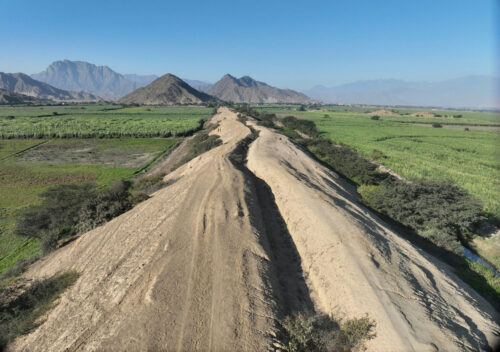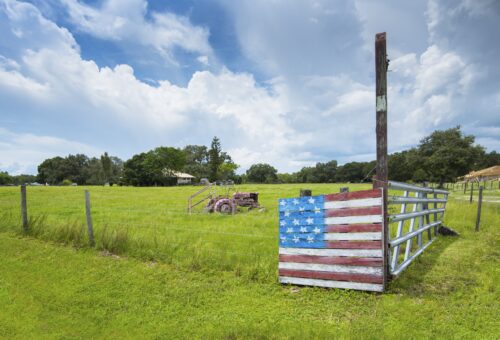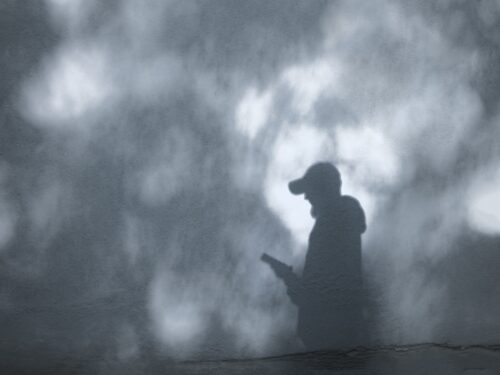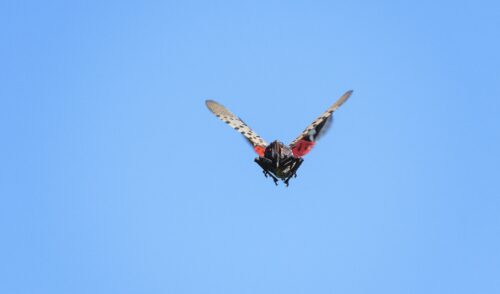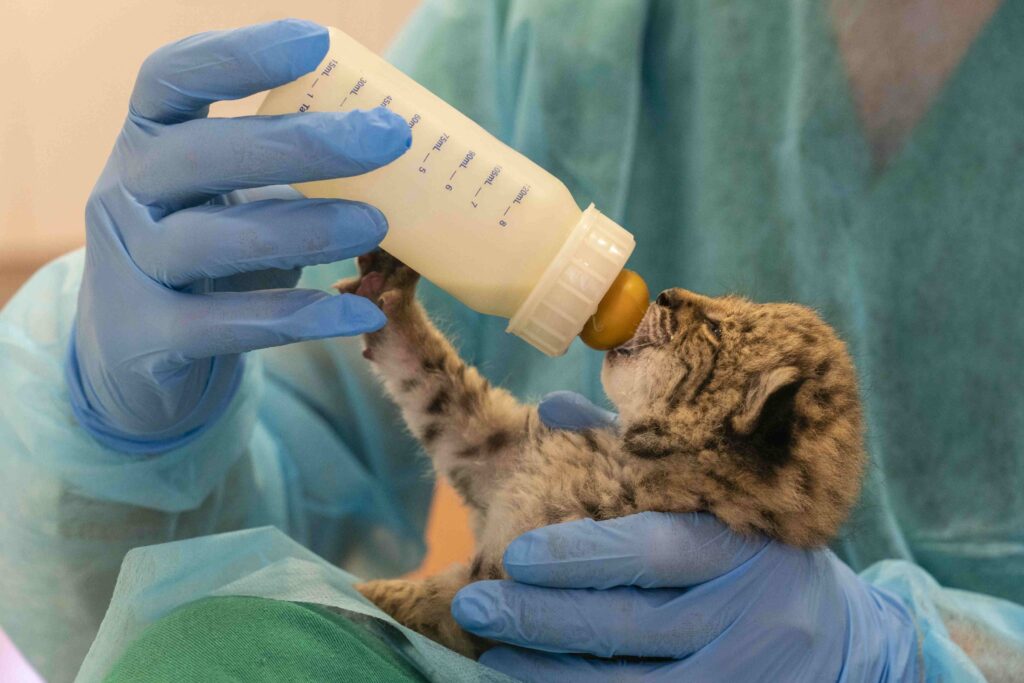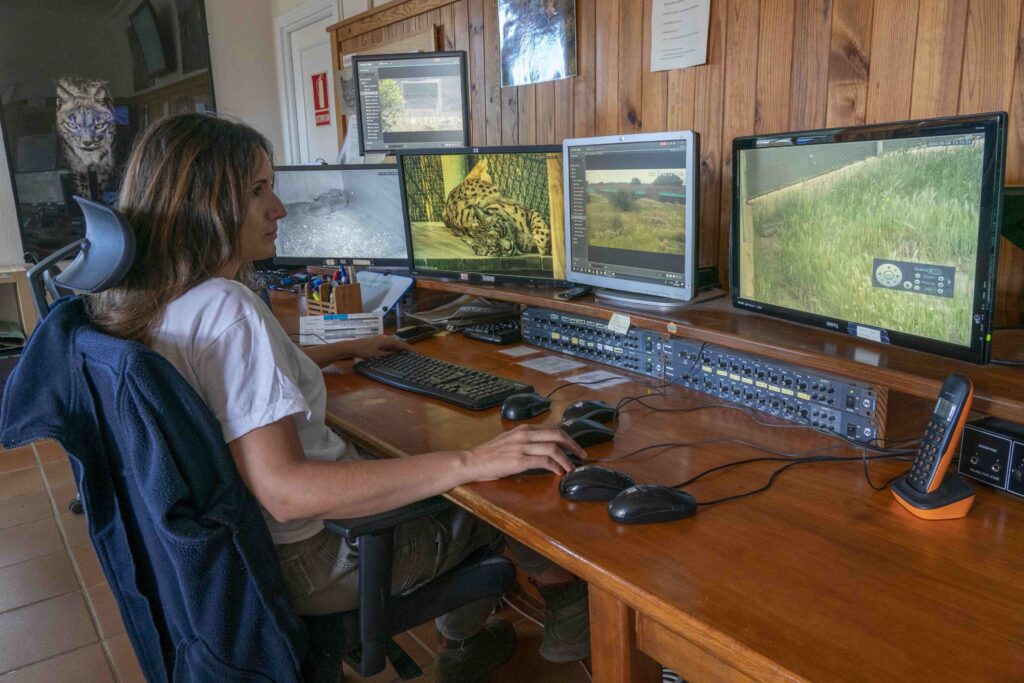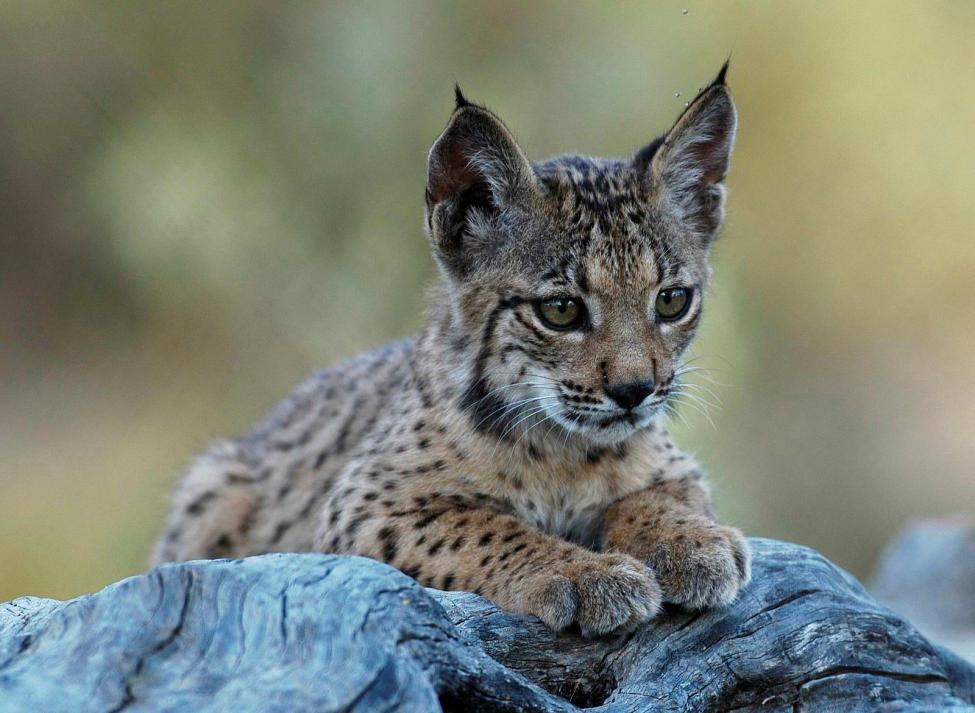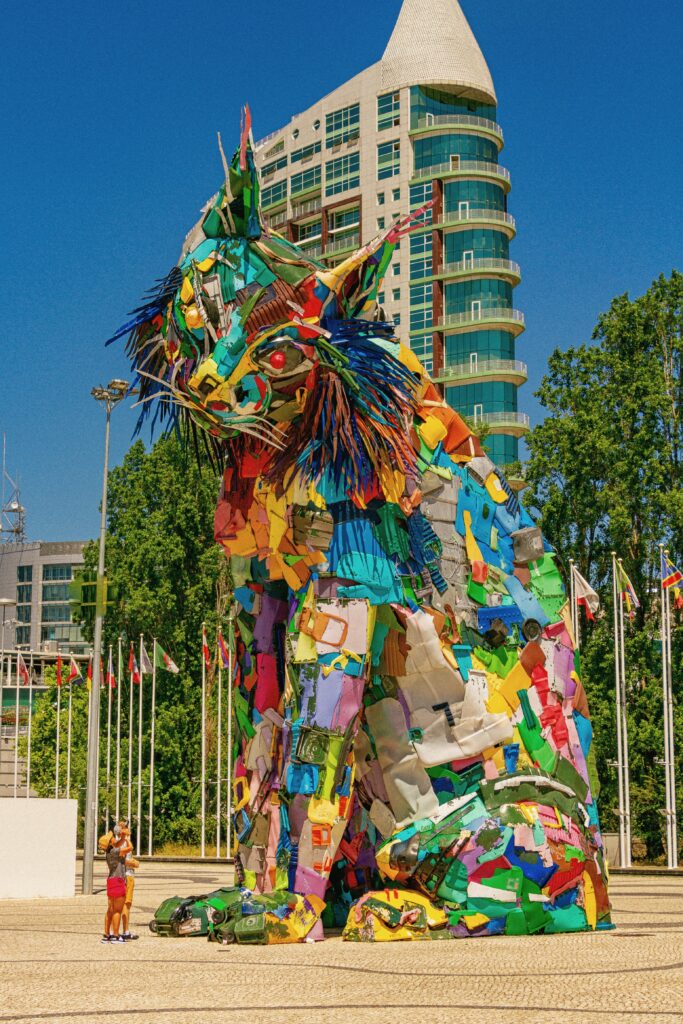Bringing Back the World’s Most Endangered Cat
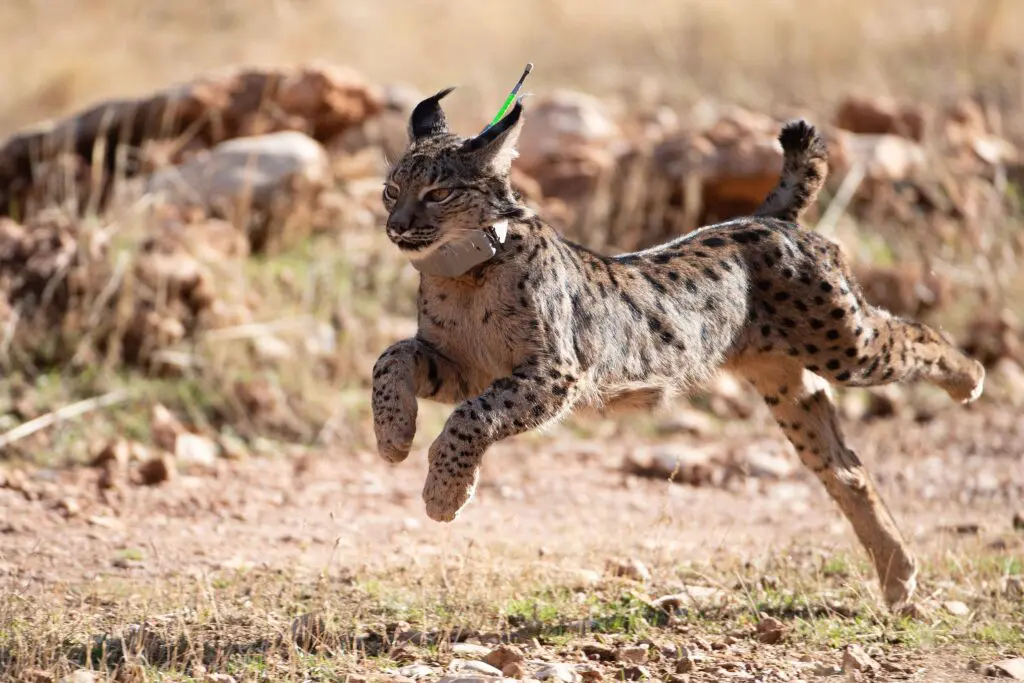
Soon after the cub is born, it’s clear that something is wrong. Her mother is restless, padding around the enclosure to deliberately avoid the mewling ball of fluff. She’s not doing what mothers usually do. The cub is shivering and desperately hungry. Without her mother to provide stimulation, she can’t even pee. Worse yet, none of the other moms have newborns, so they aren’t prepared to adopt a nursing cub.
A decision needs to be made quickly. Either the conservationists care for the cub themselves—or leave her to die.
But this cub is no ordinary cat. She’s an Iberian lynx, once considered the most endangered cat in the world.
In 2002, fewer than 100 remained in the wild. The official guidance published by International Union for Conservation of Nature (IUCN) Cat Specialist Group says, “The few remaining populations of Iberian lynx are in such an extreme situation that each individual is valuable for the conservation program. Thus, all efforts aimed at avoiding the loss of a cub, even if premature, are justified.”
Still, choosing to care for the cub is risky. She needs to be fed every few hours for the first few weeks. As one keeper noted to me, “It can break a team ’cause it’s so exhausting.” Her future is also very uncertain. Under perfect circumstances, the cub might grow up to be a normal feline, able to socialize and mate. But some hand-reared cubs end up easily stressed and prone to biting themselves. “They just suffer the rest of their lives,” another keeper said.
So, what do they do?
I traveled to Portugal to explore how conservationists respond to questions like this. I am fascinated by humans’ relationships with animals and the natural environment across different times and places. After conducting research with zookeepers across Canada, I wanted to take a close look at the people who dedicate their lives to saving a single species.
The lynxes’ comeback is “the greatest recovery of a cat species ever achieved through conservation,” said conservationist Francisco Javier Salcedo Ortiz.
Breeding one of the rarest cats in the world is rife with emotional and ethical quandaries. Conservationists are constantly tasked with solving heart-wrenching problems and achieving contradictory goals with extremely limited resources.
Given these constraints, a successful breeding program is nothing short of a miracle. I wanted to understand how conservationists had done the nearly impossible: bring back the Iberian lynx from the brink of extinction.
THE FALL AND RISE OF THE IBERIAN LYNX
At the beginning of the 20th century, more than 100,000 of these spotted predators prowled the Iberian peninsula in Southwestern Europe. But in the last several decades, numerous factors have caused their population to plummet. Between 1960 and 1990, the Iberian lynx lost an estimated 80 percent of its habitat. Highways have fragmented its territory, with many lynxes killed by automobiles. Meanwhile, their primary prey, the European rabbit, were decimated by diseases such as myxomatosis, caused by the Myxoma virus. By the early 2000s, the Iberian lynx was functionally extinct in Portugal, and fewer than 100 lynxes roamed wild in Spain.
Despite these dire circumstances, over the past two decades, funding from multiple European Union projects, national governments, and other organizations have supported this species’ recovery. To support the lynxes’ long-term survival, scientists are also reintroducing European rabbits in lynx territory, and various organizations are working to protect and restore lynx habitat.
The Iberian lynx breeding program has been a tremendous success. In 2015, the IUCN reclassified the Iberian lynx from “critically endangered” to “endangered.” As of 2022, 1,668 Iberian lynx are slinking around the hills of Spain and Portugal. Of these, 338 were born at breeding centers. In June 2024, the IUCN updated the animal’s status from “endangered” to “vulnerable.” One of the lead coordinators of the lynx conservation program, Francisco Javier Salcedo Ortiz, described this success story as “the greatest recovery of a cat species ever achieved through conservation.”
BEHIND THE SCENES OF LYNX CONSERVATION
I visited the only breeding center in Portugal, located in the dusty hills of Silves in the Algarve. Between 2009 and 2023, 162 lynxes were born at this center, and 103 of those were introduced into the wild.
On the way to the main building of the breeding center, I looked down into the 16 enclosures—eight fenced-off rectangles on each side divided by a long corridor nestled in the valley below. I scanned the enclosures, looking for a dark shape, a tuft of hair, anything vaguely lynx-shaped. My untrained eyes spotted nothing, and I wondered for a second if they were there at all.
When I arrived, I was greeted by an ethologist (an animal behavior scientist) and a volunteer, both staring at a mosaic of monitors showing different angles of the lynx enclosures. I was taken aback; it felt more like the office of a security guard than any kind of conservation work I expected.
The staff monitor the animals every hour of every day, with each 24-hour period split into three eight-hour shifts. They expertly switch from screen to screening, scribbling down every move the lynxes make in precise increments. To their right sits a stack of notebooks filled with the minutiae of each lynx’s life at the breeding center, providing a testament to the conservationists’ diligence.
Peering at a screen in the corner, I saw nothing but grass until the ethologist zoomed in to the tip of an ear. As the image enlarged, I could see the animals incredibly clearly—every miniscule facial expression, even the texture of a mother’s tongue against her cub’s cheek. But although the enclosures were meters away, the on-screen images seemed like they could be anywhere. Paradoxically, I felt a simultaneous closeness with and alienation from the lynxes.
The conservationists described similar feelings of having to navigate between intimacy and distance. The keepers and vets who work directly with the lynxes get the unique opportunity to touch these rare animals. However, their work requires an intricate balance: They must provide comprehensive care while ensuring the animals remain wary around humans, in the hopes that they may eventually survive in the wild.
Unlike the ethologists, the keepers can form reciprocal bonds with the lynxes. Yet their work is overshadowed by the knowledge that the lynxes are living away from their natural habitats. They feel even sadder for the lynxes who must stay permanently at the center. As one biologist explained, “The whole purpose of the breeding program is to put them back, never to have them in captivity.”
When I visited, there was debate about what to do with the increasing numbers of old and sick lynxes. Zoos were one option, but most were unequipped to host the animals or could not maintain the living standards upheld at the breeding center. Many conservationists were unwilling to release lynxes into substandard housing for the rest of their lives. Another option was euthanasia, but this was hotly debated. Is it better to let a lynx live out its life in an enclosure, or to euthanize the animal and devote more time and resources to improving the chances of releasing other lynxes into the wild?
Despite the absence of physical closeness, ethologists also form strong relationships with the lynxes as they watch their lives through video. This affords a different kind of intimate encounter, a glimpse into the lives of lynxes when no humans are around. “You can look at their eyes and their expressions, and how they talk to each other, and how they bond with each other,” one ethologist explained. “My relationship with them—that’s not what I value. It’s their relationship with each other. What I truly enjoy is that they have a life like I have mine.”
This relationship comes with its own discomforts. Although the keepers are responsible for providing rabbits and cleaning up after feedings, the ethologists are required to watch each rabbit get eaten. They dutifully record how the cubs play with their prey, sometimes for hours, before they kill the rabbit. While they recognize this is an important stage in the behavioral development of the lynx, it is painful to witness. An ethologist told me she learned to mute the rabbits’ screams so they don’t affect her work. When I asked her what it sounded like, she replied, “Anguish.”
The keepers face their own challenges. When I asked about the most emotionally difficult parts of their work, each responded with the same answer. In certain circumstances, keepers must personally kill rabbits for the lynx. Each keeper developed their own ways of coping—finding ways to make the process quicker for the rabbit, praying, or trying to think of the rabbit as food instead of as an animal. For people who have dedicated their lives to saving animals, this responsibility can be heartbreaking. “I felt like I was giving up on some of my principles,” one keeper said.
THE CHALLENGES OF WORKING IN CONSERVATION
In addition to dealing with ethical dilemmas, conservationists contend with long hours, low pay, difficulty taking time off, and mental exhaustion. Their jobs are incredibly demanding, both physically and emotionally. Their work is critical to society, but also critically underfunded and underpaid, often leading to poor mental health. One study found that more than a quarter of conservation professionals experienced moderate to severe psychological distress.
Some lynx conservationists shared that they stayed in their field partly due to a lack of opportunities elsewhere. “I really enjoy the work I do, but I wish I was paid more. I wish I had better conditions,” one ethologist said. “Sometimes it’s upsetting. … What if I’m funneling too much into these specific skill sets?”
They also contend with the lack of control that comes with wildlife conservation. While conservation still draws on colonial ideas of dominating nature, in the breeding center’s constantly evolving and collaborative dance between human and lynx, the lynxes take the lead. Biologists can pair up lynxes in a way that preserves genetic diversity, but the lynxes are the ones who decide if they will mate. A keeper can offer an abandoned newborn to another mother, but it is the animal who decides if she will accept the cub.
“We get frustrated because you cannot control everything,” one conservationist said. “You also learn that you are not a big part. Your part is very small, but it doesn’t mean that it’s not important.”
Beyond the careful management at the breeding center, there are no guarantees of success following release. Some lynxes have drowned in wells, died in traffic accidents, or been poisoned with tampered meat. Other lynxes never stop running, like Lithium, who traveled more than 1,000 kilometers from southern Portugal to Barcelona.
But some survive, thrive, and multiply. And this has made all the difference.
THE REWARDS OF LYNX CONSERVATION
Despite the challenges, conservationists feel strongly about the importance of their work. One ethologist who held the same role for more than 10 years said, “Your work here is really repetitive. But every day, I’m learning something. And that makes me feel that I have to do more so that [the lynxes] can be truly respected and valued.”
Conservationists also focus on stories of hope. In one case, two cubs who were raised together both became mothers. In another instance, a lynx adopted an abandoned cub. “I think it was the best moment in all these years, when she took the cub, licking it as if it was her own,” one ethologist said.
I was also lucky to attend a release—the culmination of all these conservationists’ hard work. As we drove into what seemed like the middle of nowhere, I wondered how it might feel to be the two cubs, Sidra and Salão. After being raised at the center, the 1-year-olds were taken early one morning across the Spanish-Portuguese border. In the darkness of their cages, they were unaware that they would soon be set free into a world a million times bigger than the enclosures they had called home.
People from all walks of life came to watch the event. When the time came, we held our breaths as the first cage was slowly opened. Sidra bounded straight into the safety of the shrubs. Salão trotted some distance away, then took a moment to glance back, considering the humans who had come to say goodbye.
As I watched Sidra and Salão join the more than 1,600 lynxes frolicking across the Iberian Peninsula, I paused, imagining the hundreds of invisible hands that had brought the Iberian lynx back to Portugal and Spain.
